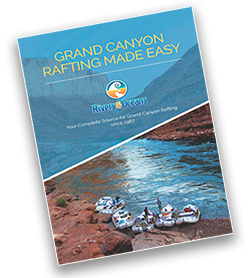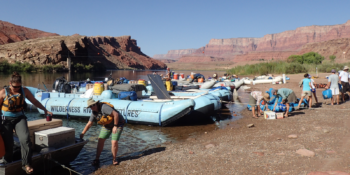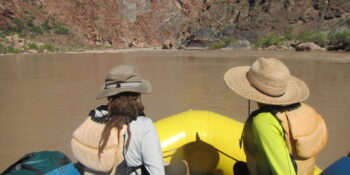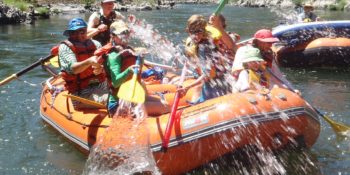
Upper vs. Lower Grand Canyon: Which Section is Best for Your Rafting Adventure?
When planning a Grand Canyon rafting trip, one of the most common questions we get is: Which section of the Grand Canyon is better, the Upper or Lower? This question arises frequently for guests considering the “Split Canyon trips,” which involve a mandatory 8-10 mile hike on the Bright Angel Trail. While both sections offer unique and unforgettable experiences along the Colorado River, they each have their own distinct personalities. Here’s a breakdown to help you decide which section is best for your adventure.
The Upper Grand Canyon: Intimate and Geologically Rich
The Upper Grand Canyon marks the beginning of all river rafting trips and the start of the Canyon’s majestic journey. Beginning at Lees Ferry (river mile 0), this section covers 88 river miles and ends at Pipe Creek Beach or Phantom Ranch, where the Bright Angel Trail leads to the mandatory hike out.

Why Choose the Upper Section?
- Intimate Canyon Experience: The Upper Canyon is known for its narrow stretches and towering walls that make you feel closely connected to your surroundings. The smaller beaches and abundant shade offer a more personal and serene experience.
- Notable Rapids: While the Lower section may have the biggest rapids, the Upper section doesn’t disappoint. Rapids like Unkar, Hance, Sockdolager, and Grapevine (all Class 5-7) provide thrilling whitewater adventures.
- Geological Marvels: The Upper section is home to some of the Grand Canyon’s most famous geological formations, including Marble Canyon. Highlights also include the Native American ruins at Nankoweap, the expansive Red Wall Cavern, and the stunning Little Colorado River Confluence.
- Hiking Considerations: Ending your trip with an 8-10 mile hike out of the Canyon may seem daunting, but it can be more comfortable than starting with the hike down. You’ll hike out of the heat, with temperatures cooling as you ascend. Plus, the South Rim offers amenities like hot showers and cozy beds—a welcome treat after a long day of hiking.
Find Your Grand Canyon Rafting Adventure…

Find Your Trip
Request a trip search, we’ll find tours meeting your criteria.
*** Our service is free to you and paid for by our partner outfitters. We guarantee the same price as booking directly with the outfitter.
The Lower Grand Canyon: Big Rapids and Incredible Side Canyons
The Lower Grand Canyon begins with an 8–10-mile descent on the Bright Angel Trail, a hike generally more challenging than the ascent out of the Canyon on Upper section trips. While the descent may take less time, its steepness can be hard on your knees and hips. Starting your trip with this hike may cause body soreness, potentially limiting your ability to fully enjoy your rafting adventure for the first few days.
As you descend approximately 5,000 feet, you’ll also experience a significant temperature increase—up to a 20-degree difference between the rim and the river. This means you’ll be hiking directly into the heat, adding to the physical demands of the trek.
Why Choose the Lower Section?
- Adrenaline-Pumping Rapids: If you’re drawn to the biggest whitewater, the Lower Canyon is for you. Rapids like Horn Creek, Hermit, Crystal, Specter, and the infamous Lava Falls provide some of the most intense whitewater in the Grand Canyon.
- Spectacular Hikes: The Lower section offers some of the best side canyon hikes, with Havasu Creek being a standout. Other popular hikes include Shinumo Creek, Blacktail Canyon, and Deer Creek.
- Diverse Take-Out Options: You can choose from three take-out points: Whitmore Wash (river mile 188), Diamond Creek (river mile 225), and Pearce Ferry (river mile 288). Diamond Creek is the most popular, offering the best whitewater and hiking opportunities. If you continue to Pearce Ferry, you’ll end with a smooth, flat water section and a jet boat ride through the last 20 miles.
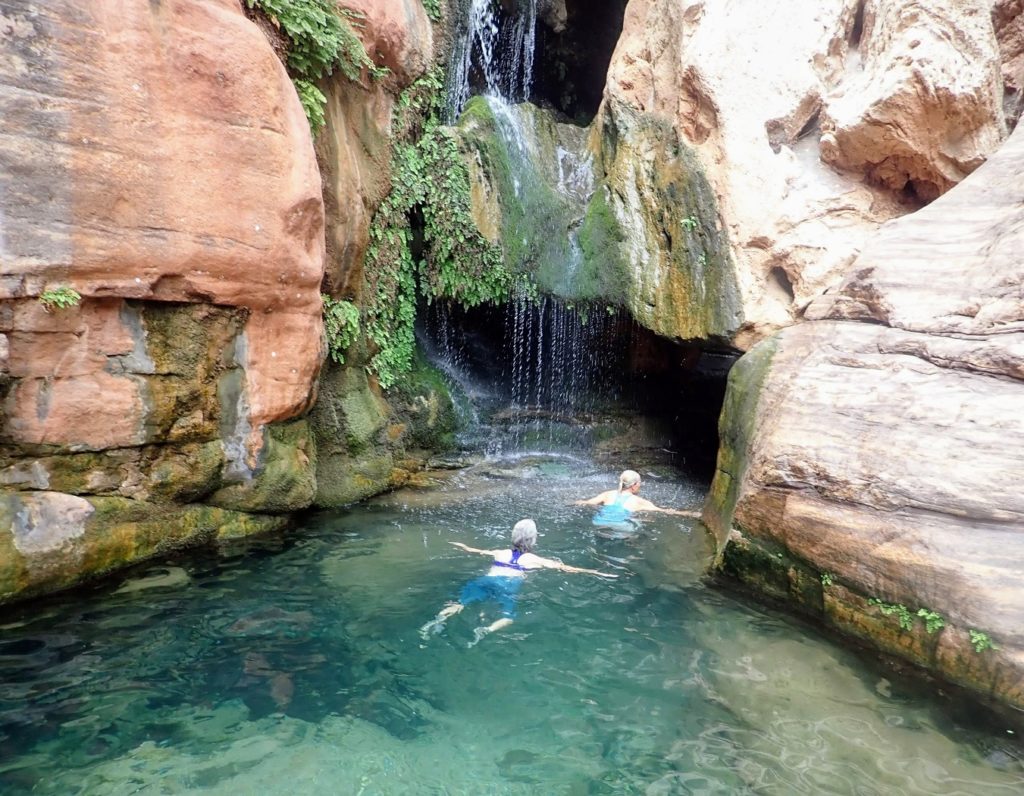
Full Canyon Experience: The Best of Both Worlds
While both sections of the Grand Canyon offer incredible experiences, we recommend the Full Canyon rafting trip if you can swing it. This option allows you to experience the best of both the Upper and Lower sections in one unforgettable adventure.
No matter which section you choose, one thing is certain: once you experience one half of the Grand Canyon, you’ll be itching to come back for the other!
Interested in us finding available trips for you, please contact us. Our service is free and covered by the outfitters. We guarantee the same rate as you would pay going directly with an outfitter. One call to us gets you availability for all 17 Grand Canyon rafting companies.
Start Planning Your Best Adventure
Dispatches from adventure tours around the world and tips for intrepid travelers. Read Our Blog
Lees Ferry, Grand Canyon National Park
Lees Ferry, Arizona is the gateway to rafting the Colorado River through the Grand Canyon. From its history as a vital crossing point for pioneers to its role as a stop along the historic Honeymoon Trail, this site offers a blend of natural beauty, cultural heritage, and outdoor adventure.
Sun Protection while Whitewater Rafting
When planning a rafting trip through the canyon, it’s important to consider how to best protect yourself from the sun. The combination of all day exposure and reflected sunlight off the water can be intense. Proper protection allows you to get the most out of your trip and avoid sunburn, heat exhaustion, or even skin damage.
Family Whitewater Rafting Trips
In this article, we’ll explore what makes family whitewater rafting trips special, provide tips for planning a successful excursion, and highlight some of the most popular family whitewater rafting trips. Learn about the best option based upon length, difficulty, whitewater, access, and scenery.

